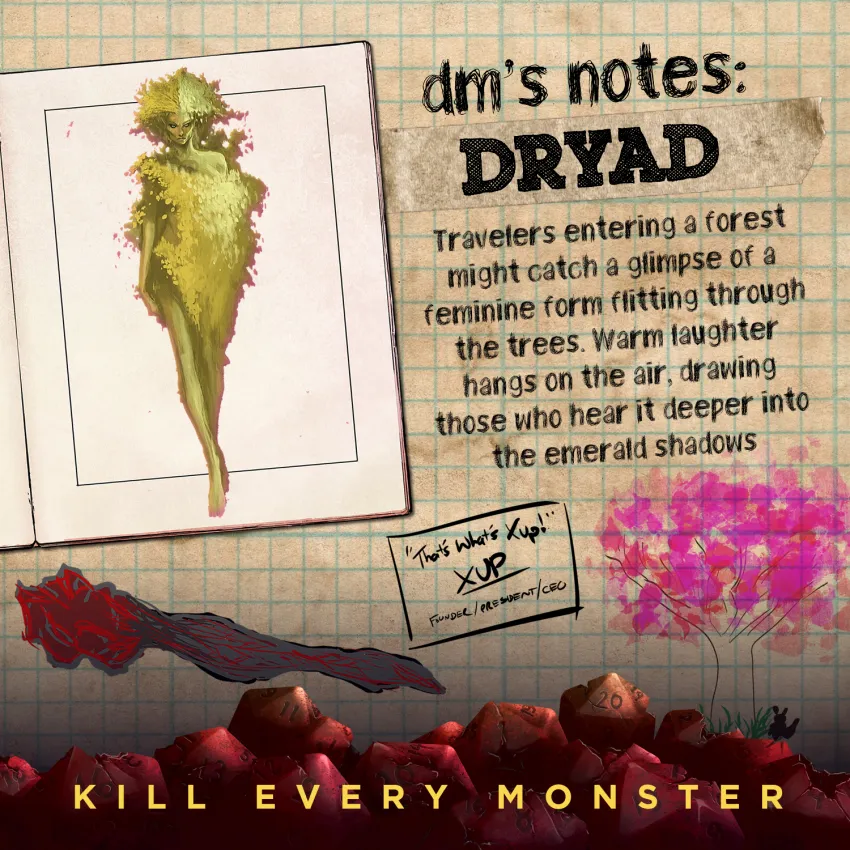Dryads and Treants in Dungeons & Dragons 5e
In the rich lore of Dungeons & Dragons 5th Edition (D&D 5e), the natural world is populated with a variety of magical creatures, each with its own unique characteristics and origins. Among these beings, Dryads and Treants stand out as iconic guardians of the forest. While both are deeply connected to nature and trees, they differ significantly in their origins, characteristics, and roles. This article explores the key differences between Dryads and Treants in D&D 5e.
Dryads: The Spirit of the Trees
Origin and Nature
Dryads are fey creatures often described as tree spirits. In D&D lore, they are typically bound to a specific tree, known as their “bonded tree” or “home tree,” which they protect and draw life from. This bond is so strong that a Dryad cannot stray too far from her tree without experiencing great distress, potentially leading to death if the distance is too great for too long.
- Creation: Dryads are said to be created by powerful nature deities or fey beings, often as guardians of sacred groves or particular trees. They embody the spirit of nature and often exhibit a strong protective instinct toward their forest homes.
- Gender: In traditional folklore and D&D, Dryads are always depicted as female, representing the nurturing and life-giving aspects of nature.
Characteristics and Abilities
- Appearance: Dryads are usually portrayed as beautiful, ethereal women with skin that resembles bark and hair like leaves or moss, blending seamlessly with the forest.
- Abilities: Dryads possess a range of magical abilities tied to nature. They can communicate with plants and animals, use natural magic to protect their domains, and often have charming and entrancing powers to ward off intruders. Their connection to their bonded tree grants them abilities like tree stride, allowing them to travel between trees.
- Lifespan: A Dryad’s life is intimately linked to her bonded tree. If the tree is healthy, the Dryad can live indefinitely. However, if the tree is harmed or destroyed, the Dryad will suffer and could die if the tree perishes.
Treants: The Walking Trees
Origin and Nature
Treants are essentially sentient, walking trees. They are massive, humanoid plant creatures known for their strength, wisdom, and deep connection to the natural world. Unlike Dryads, Treants achieve sentience through natural processes rather than being created by a specific entity.
- Creation: Treants are trees that have gained consciousness over time, often as a result of exposure to ancient magic or the influence of powerful nature deities. They are not bound to a single tree but are living trees themselves.
- Gender: Treants are generally considered male, embodying the enduring, protective aspects of nature.
Characteristics and Abilities
- Appearance: Treants resemble large, ancient trees with humanoid features. They have thick, bark-like skin, branches for arms, and can vary greatly in appearance based on the type of tree they resemble.
- Abilities: Treants are powerful beings capable of great physical strength and endurance. They can animate and control other trees, making them formidable guardians of the forest. Treants can also communicate with plants and animals, and they are skilled in using their surroundings for camouflage and protection. They often act as leaders or protectors of woodland areas, standing against threats to the natural world.
- Lifespan: The lifespan of a Treant is closely tied to the type of tree they resemble and the conditions they live in. They can live for centuries, or even millennia, depending on their environment and the care they receive. Treants have a natural lifespan that varies with species, unlike Dryads, whose existence is bound to a specific tree.
Key Differences Between Dryads and Treants
-
Origin and Creation:
- Dryads: Created as tree spirits by nature deities or fey entities, always bound to a specific tree.
- Treants: Achieve sentience naturally, embodying a tree that has gained consciousness.
-
Gender Representation:
- Dryads: Always female, representing nurturing aspects of nature.
- Treants: Typically considered male, embodying the strength and protective aspects of nature.
-
Physical Characteristics:
- Dryads: Human-like in form but with features resembling their bonded tree.
- Treants: Giant, tree-like humanoids with physical traits depending on their tree type.
-
Lifespan and Dependency:
- Dryads: Life tied to the health and existence of their bonded tree.
- Treants: Lifespan varies with species and environmental conditions, not tied to a specific tree.
-
Role and Abilities:
- Dryads: Guardians of specific trees or groves, skilled in nature magic and enchantments.
- Treants: Protectors of forests, capable of animating trees and using immense physical strength.
Conclusion
Dryads and Treants are both integral to the rich tapestry of Dungeons & Dragons’ natural world, each serving unique roles as protectors and embodiments of the wilderness. Understanding the distinctions between these two beings adds depth to the lore and enhances the experience for players and Dungeon Masters alike, whether in creating engaging forest encounters or crafting compelling stories that delve into the mysteries of the natural world.




